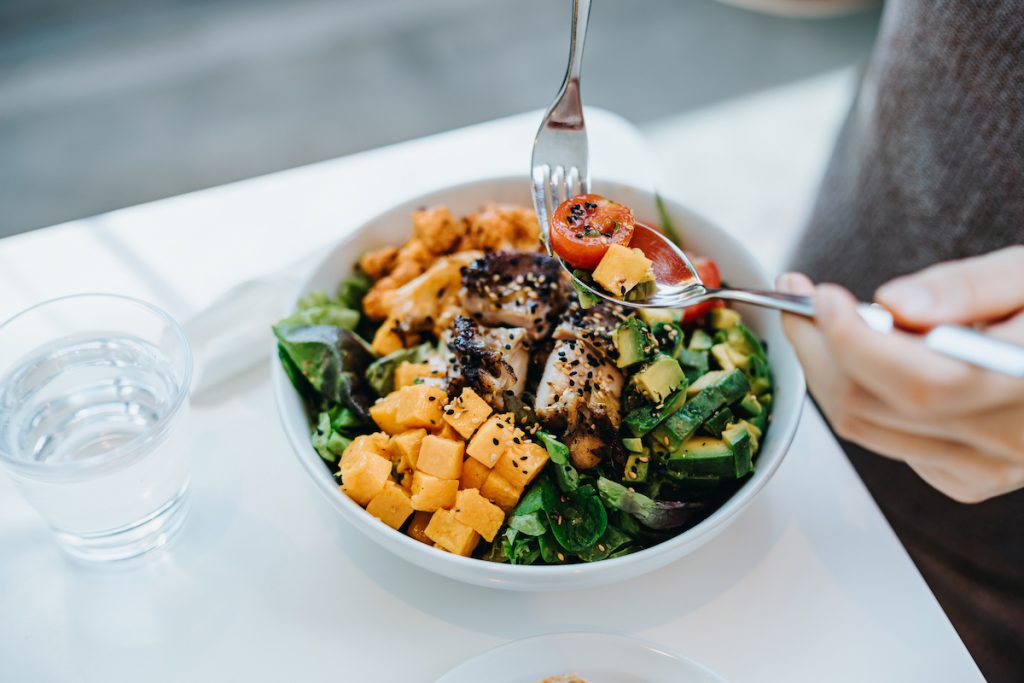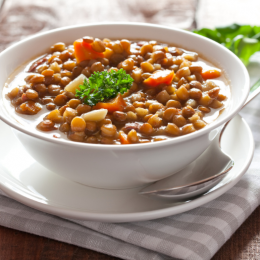What Are Nutrient-Dense Foods (And Why You Should Eat More of Them)
It’s not just about calories — it’s about how many nutrients you can pack into each calorie that counts.

When you turn over a package in the grocery store to peek at the nutritional breakdown, it’s tempting to zero in on the large, bold number at the top of the Nutrition Facts panel: the calories. After all, we’ve been bombarded for years with messages that calories count most when it comes to achieving and maintaining a healthy body weight.
Yet, nutrition experts and various diet plans are increasingly tossing out the term “nutrient density” to describe the types of foods we should be eating more of. What does it mean?
Here’s your complete guide to nutrient density, from why it matters to which foods to fill your plate with.
Healthy eating and fitness go together! SilverSneakers classes and events are happening daily at participating gyms, online through SilverSneakers LIVE, and at community centers near you. Activate your free online account to get started.
What is nutrient density?
Nutrient density is an eating concept that goes beyond judging a food by its calories alone. As a loose definition, nutrient density equals nutrients per calorie. The greater the concentration of nutrients there are in each food calorie, the more beneficial that food is believed to be for good health.
“Nutrients” typically refers to the vitamins and minerals contained in foods that are crucial to our health, such as calcium, vitamin C and magnesium. Nutrient-dense foods are rich in these compounds, without containing too much saturated fat, added sugars and salt, according to the American Heart Association.
Some research suggests that consuming more nutrient-dense foods can promote healthy aging by lowering the risk for some deadly chronic conditions like heart disease. It’s thought that nutrient density is largely behind why studies show that eating more colorful fruits and vegetables can improve longevity.
Recommended FREE SilverSneakers On-Demand Class: Eating A Varied Diet
Which foods are nutrient-dense?
You can find nutrient-dense foods in every tier of the food pyramid. Some common foods high in nutrient density include:
- Beans, such as cannellini beans
- Eggs
- Fatty fish, such as salmon
- Fruits, such as blueberries
- Lentils
- Nuts, such as almonds
- Plain, unsweetened yogurt
- Seeds, such as chia seeds
- Vegetables, especially deep-colored ones
- Whole grains, such as quinoa
These foods offer high levels of vitamins and minerals in each serving without containing a ton of calories. Kale is a great example of a very nutrient-dense food. A single cup serving of the leafy green contains a mere 7 calories but plenty of vitamin C, beta-carotene and vitamin K making it notably nutrient-dense.
Blueberries are another nutritious option. They contain just 84 calories in a cup, yet they also have a wide range of essential vitamins and minerals including vitamin C, manganese and vitamin K (not to mention high levels of antioxidant compounds).
Just because a food is high in calories doesn’t mean it’s not nutrient-dense. Take almonds, for example. While a handful of nuts delivers about 164 calories, it possesses a range of vitamins, minerals and healthy unsaturated fats that make it a nutrient-rich food, even for the calories it contains.
Recommended reading: 4 Food Pairings to Boost Nutrient Absorption
And it’s not just plant-based foods that can be considered nutrient-dense. Take for instance an egg. A large egg has just 72 calories, yet these calories come with a handful of essential nutrients including protein, vitamin B12, selenium and brain-benefiting choline.
While salmon contains more calories than tilapia, it also has more lofty amounts of important items for better health like vitamin D, vitamin B12 and omega-3 fatty acids so should be considered a more nutrient-dense seafood option. This is another good example of why we should not be so quick to judge foods by calories alone.
What’s the opposite of nutrient-dense?
Often called calorie-dense or energy-dense foods, these are items that deliver a meager amount of nutrients for the calories they contain. Sugar is a glaring example. Each tablespoon serving contains about 48 calories, which is not very high, but in those calories are virtually no vitamins and minerals. So, each calorie is working less hard for you.
Foods low in nutrient density often contain added sugars and refined carbs that can lead to weight gain and chronic diseases like cancer. They include:
- Baked goods
- Candy
- Fast foods
- Potato chips
- Processed red meat, like bacon and hot dogs
- Soda
- Vegetable oils
- White bread
A medium serving of fast-food French fries has nearly 400 calories without much nutrient payoff. (In contrast, a medium baked potato has a more constrained 160 calories but higher amounts of essential nutrients like vitamin C, potassium and magnesium making it more, you guessed it, nutrient-dense.)
Subscribe to our newsletter
It's quick and easy. You could be one of the 13 million people who are eligible.
Already a member? Click to discover our 15,000+ participating locations.
Follow Us
Many heavily processed packaged foods marketed as “low-calorie” or “low-fat,” such as baked potato chips or bottled salad dressing, also provide little in the way of vital nutrients despite their humble calorie load.
The Bottom Line
There is only so much food you can eat on any given day. In the interest of maximizing the nutritional value of your diet, it makes sense to stock your kitchen with the most nutrition-dense foods possible.
How do you get started on eating a mainly nutrient-dense diet? For the most part, eating predominantly whole foods instead of highly processed ones will give you more bang for your calorie buck. For example, it’s smarter to choose a bowl of plain yogurt with sliced strawberries instead of strawberry-flavored yogurt topped with high-sugar granola.
Another way to go about it is with the 80/20 approach, where you make sure 80% of your diet comes from nutrient-dense foods with a 20% allowance for other foods. That’s enough to keep your diet interesting while still delivering the nutrients your body needs.
See our sources:
Nutrient density overview: American Heart Association
Nutrient-dense diet study: American College of Lifestyle Medicine
Link between calorie-dense foods and cancer: Journal of the Academy of Nutrition and Dietetics
Check Your SilverSneakers Eligibility Instantly
SilverSneakers members can go to thousands of nationwide gyms and fitness locations, plus take SilverSneakers LIVE online classes that are designed for all fitness levels and abilities. If you have a Medicare Advantage plan, it may include SilverSneakers — at no additional cost. Check your eligibility instantly here.
Already a member? Get your SilverSneakers member ID and exclusive fitness and wellness content by activating your online account here.
Not eligible for SilverSneakers? You can still get 200+ free SilverSneakers On-Demand videos and stay in touch with us by creating your online account.





